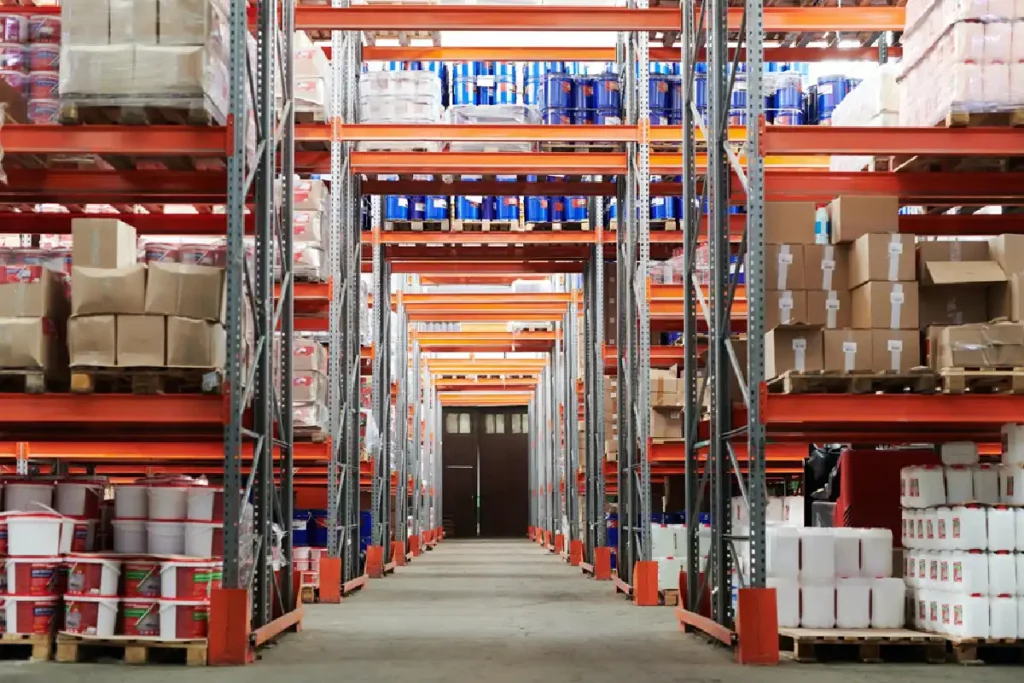Efficient warehouse layout and proper spacing are critical elements in the success of any logistics operation. The arrangement of shelving, aisles, and storage areas can significantly impact productivity, workflow efficiency, and the bottom line. In the business world, where margins are often razor-thin and customer expectations are higher than ever, optimizing warehouse space is essential for success.
A well-designed warehouse layout not only creates a smooth flow of goods from receiving to shipping but also ensures that valuable inventory is stored and handled in the most efficient manner possible. A poorly planned layout can lead to bottlenecks, wasted time, and unnecessary costs. With the rise of e-commerce and omnichannel retailing, warehouses face increasing pressure to fulfill orders quickly and accurately, making efficient space utilization more critical than ever before.
Here are four expert strategies warehouse managers can implement to optimize their facilities. By adopting these best practices, warehouse managers can improve operational efficiency while reducing costs and enhancing customer satisfaction to gain a competitive edge in the marketplace.
Analyze the Current Layout and Workflow
Before implementing any changes to the warehouse layout, it’s important to conduct a thorough analysis of the existing setup and workflow. This includes assessing the movement of goods, identifying bottlenecks, and understanding the flow of operations from receiving to shipping. Gathering data on inventory turnover rates, picking frequencies, and order processing times can help warehouse managers pinpoint areas for improvement and develop a targeted strategy for optimization.
Once the analysis is complete, you should consider using tools like process mapping or simulation software to visualize the current workflow and identify opportunities for optimization, like better warehouse lighting to enhance visibility and maintain safety.
Engage with frontline staff and gather feedback on pain points and inefficiencies they encounter in their daily tasks. This approach can provide valuable insights and help ensure that any proposed changes to the layout align with the needs and requirements of the workforce.
Implement Lean Principles
Embracing lean principles in warehouse management can improve efficiency and reduce waste. Eliminating unnecessary movements, optimizing storage space, and standardizing processes helps warehouses operate more smoothly and effectively. Adopting practices like 5S (Sort, Set in order, Shine, Standardize, Sustain) can help create a clean and organized work environment, making it easier for staff to locate items and perform their tasks efficiently.
Managers should also consider implementing other lean techniques such as value stream mapping, kanban systems, and just-in-time inventory management. These tools and methodologies can help identify and eliminate non-value-added activities, reduce excess inventory, and improve overall throughput.
Continuously striving for improvement and empowering employees to participate in the process offers warehouses opportunities for higher levels of efficiency and productivity while minimizing waste and inefficiency.
Take Advantage of Vertical Space
In many warehouses, vertical space is underutilized, leading to inefficient use of available square footage. Be sure to maximize vertical space through the use of tall storage racks, mezzanines, or automated vertical storage systems to increase storage capacity without expanding the footprint of the facility. Vertical storage solutions allow businesses to store more inventory within the same floor area, reducing the need for costly expansions or off-site storage facilities.
When implementing vertical storage solutions, consider factors like accessibility, safety, and ease of retrieval. Ensure that aisles are wide enough to accommodate equipment and that safety protocols are in place to prevent accidents or injuries. Invest in proper lighting and signage to enhance visibility and facilitate accurate picking and replenishment processes.
Embrace Flexible Storage Solutions
Flexibility is key in warehouse management, especially in dynamic environments where inventory levels and SKU mix may vary over time. Instead of fixed storage configurations, consider implementing flexible storage solutions. Some examples include adjustable pallet racking, modular shelving systems, or mobile storage units. These flexible storage options allow warehouses to adapt quickly to changing inventory needs and seasonal fluctuations without requiring major layout changes or investments in new equipment.
When designing a flexible storage system, prioritize versatility and scalability to accommodate future growth and changes in product mix. Invest in storage solutions that can be easily reconfigured or expanded as needed, minimizing downtime and disruption to operations.
Try incorporating technology to enable real-time inventory tracking and management, ensuring accurate stock levels and efficient order fulfillment processes. Embracing these flexible storage solutions helps optimize space utilization and improve agility in responding to evolving business requirements.
Final Thoughts
Maximizing warehouse efficiency requires careful planning, strategic thinking, and a commitment to continuous improvement. Warehouse managers need to create an environment that encourages productivity, efficiency, and innovation.
By analyzing current workflows, lean principles, utilizing vertical space, and embracing flexible storage solutions, warehouses can optimize their layout and space utilization to enhance productivity, streamline operations, and drive greater business success. With these expert strategies in place, managers can unlock the full potential of their facilities and position their businesses for long-term growth and profitability.


